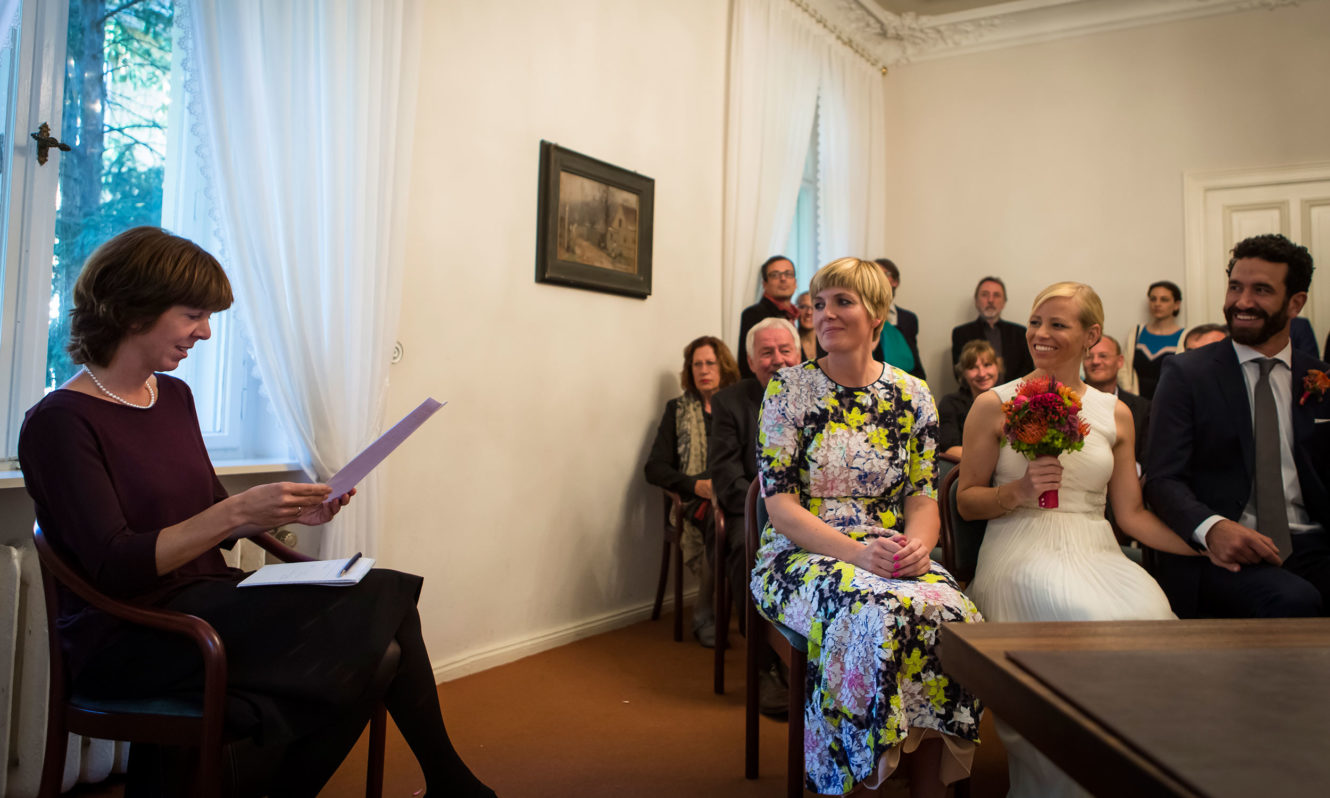
Presentation by an American trade union delegation to the Helios Group Works Council 2017
Consecutive interpreting is a sequential form of interpreting.
While the speaker is presenting in the source language, the interpreter listens and takes notes based upon a specially developed, individual notation technique. When the speaker pauses after a few sentences, the interpreter presents the previous statements in the target language.
This form of interpreting is more time-consuming as each statement is essentially delivered twice. In fact, the interpreter needs approximately the same time for the interpretation as the speaker. For this reason, it is only recommended for shorter events.


In simultaneous interpreting the interpreter speaks at the same time as the speaker. Consecutive interpreting requires the speaker to present in short passages (one to five minutes or whatever time interval the interpreter and speaker agree on) followed by the consecutive interpreter repeating the content and tone of the message in the target language. While the client must allow twice as much time for this type of interpreting, this method allows for flexibility in terms of location as consecutive interpreting does not require an interpreter's booth or special equipment. In other words, consecutive interpreters can work in almost any setting. But as this method requires specific skills on the part of the interpreter, consecutive interpretation is not offered by every professional interpreter.
 In order for a consecutive interpreter to be able to faithfully interpret into the target language what has been said in the source language, they take notes during each passage of speech. Each interpreter has a highly individualized notation technique consisting of symbols and signs that no one else can decipher. As in other forms of interpreting, an important part is to convey not only the literal meaning but also the mood, e.g. humor, irony or anger.
In order for a consecutive interpreter to be able to faithfully interpret into the target language what has been said in the source language, they take notes during each passage of speech. Each interpreter has a highly individualized notation technique consisting of symbols and signs that no one else can decipher. As in other forms of interpreting, an important part is to convey not only the literal meaning but also the mood, e.g. humor, irony or anger.
 Before the event begins, the speaker and interpreter agree on the length of each passage to be interpreted. Interpreter and speaker can decide that the speaker will pause after each sentence, paragraph, train of thought or even an entire brief speech – depending on the individual preferences of the presenter and consecutive interpreter.
Before the event begins, the speaker and interpreter agree on the length of each passage to be interpreted. Interpreter and speaker can decide that the speaker will pause after each sentence, paragraph, train of thought or even an entire brief speech – depending on the individual preferences of the presenter and consecutive interpreter.
Since consecutive interpreting doubles the speaking time, this type of interpreting service is best suited for short events and meetings. Typically, consecutive interpreters work at events such as:
Sworn and certified interpreters also use this interpreting format in official settings including:
Whether in a private or official setting, professional interpretation will make a significant contribution to the success of your international event. Our agency renders high-quality interpreting and translation services. Please contact us if you would like more information on the advantages and disadvantages of consecutive versus simultaneous interpreting. Also, let us know if you need a highly professional and experienced consecutive interpreter in Berlin, Germany, or internationally for your project.
We use cookies to optimize and continuously improve our website for you. By continuing to use the website, you agree to the use of cookies. You can find further information on cookies in our data protection declaration
